Guenther’s mouthbrooder - Chromidotilapia guentheri
Scientific name: Chromidotilapia guentheri
Common name: Guenther’s mouthbrooder
Family: Cichlidae
Usual size in fish tanks: 12 - 14 cm (4.72 - 5.51 inch)
014
Recommended pH range: 6 - 8
Recommended water hardness: 5 - 19°N (89.29 - 339.29ppm)
0°C 32°F30°C 86°F
Recommended temperature range: 23 - 25 °C (73.4 - 77°F)
The way how these fish reproduce: Spawning
Where the species comes from: Africa
Temperament to its own species: peaceful
Temperament toward other fish species: peaceful
Usual place in the tank: Bottom levels
Origin
Guenther’s mouthbrooder are to be found on the African continent. The are to be found in Western Africa where they inhabit the larger river tributaries.
Short description
These fish belong to the family of Cichlidae and have been classified with the Latin name of Chromidotilapia guentheri. Adult specimens can reach an average length of just under 6 inches, unlike many other cichlids they have a peaceful disposition but can become aggressive at spawning times. They can become aggressive towards their own kind so it is recommended that they are kept as a single pair, two males in the same aquarium can lead to aggression problems. They are often the preferred species for keepers who wish to gain experience with cichlids without having to deal with high levels of aggressive behaviour.
Lifespan
If cared for correctly the average lifespan for Guenther’s mouthbrooder should be at least 10-15 years of age.
General care
To house a single pair the recommended minimum aquarium size should be at least 4 feet (120cm) in length and 1 foot (30cm) wide. They should never be added to a new set up, they require very high water quality and stable water parameters. They are high waste producers so ensure that the filtration is rated for the aquarium water volume or even higher and this should be backed up with large weekly water changes, at least 30% of the water volume. Sand will need to be used for the substrate as they will dig around in this, plants are optional but there is every chance they will be uprooted. Rocks or wood can be added but they are not essential. The water temperature should range between 23-25°C (74-77°F) and the pH should range between 6.0-8.0. Keep the lighting medium to subdued and ensure that the tank is fully cycled, immature set ups will cause parameter swings which are detrimental to the health of the fish.
These fish can be housed with other cichlids but only species of a similar peaceful nature. They will occupy the lower levels of the aquarium so it may be best to add tank mates that prefer the higher levels.
Feeding
An easy species of fish to feed but they do require a varied diet. They will swim around the substrate sifting for food at times. For the staple diet offer them a quality flake food or cichlid pellets. This should be varied with live or frozen foods such as blood worms, brine shrimp or artemia. They will also benefit with treats of spirulina flake.
Sexing
Unusually for cichlids, mature females will display a brighter colouration compared to mature males. They may also display a pinkish region around the belly area and also develop a white stripe on their dorsal fin.
Breeding
Guenther’s mouthbrooder are mouthbrooders which is not unusual for cichlids but they are biparental mouthbrooders. Both parents will take responsibility for incubating and guarding the newly hatched fry in their mouth. They are classed as substrate spawners but if there are flat stones in the aquarium, these will often be preferred. It is usually the ,ale that will select the spawning site and entice the female to deposit her eggs there, when spawning does take place approximately 50-150 eggs will be deposited. These are quickly fertilised by the male they are then scooped up into the female's mouth. Incubation is shared between the parent fish both taking turns to guard their territory as well. The fry will only be released for long periods of time when they are large enough to look after themselves. Initial feeds for the fry should be newly hatched brine shrimp or similar.

 Thread-finned
Thread-finned 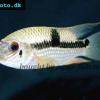 Acara
Acara  Yellow
Yellow  Patrick's
Patrick's  Blue
Blue  Green
Green 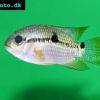 Acara
Acara  White
White  Compressed
Compressed 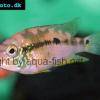 Pastel
Pastel  Midas
Midas  Red
Red  Bluemouth
Bluemouth  False
False 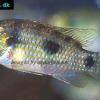 African
African  Agassiz's
Agassiz's  Banded
Banded 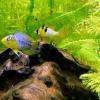 Yellow
Yellow  Cockatoo
Cockatoo  Blue
Blue  Blackstripe
Blackstripe  Highfin
Highfin  Redstripe
Redstripe  Threadfinned
Threadfinned  Macmaster’s
Macmaster’s 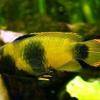 Panda
Panda  Norbert’s
Norbert’s 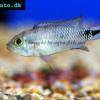 Blue
Blue  Thin-line
Thin-line  Three-striped
Three-striped  Viejita
Viejita 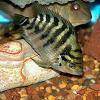 Flier
Flier  Archocentrus
Archocentrus  Convict
Convict  Seven
Seven  Spiny
Spiny  Oscar
Oscar  Sunshine
Sunshine  Chitande
Chitande  Firebird
Firebird  Midnight
Midnight  Lake
Lake  Sunshine
Sunshine  Aulonocara
Aulonocara  Nyasa
Nyasa 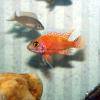 Ruby
Ruby  Grants
Grants  Aulonocranus
Aulonocranus  Chameleon
Chameleon  Benitochromis
Benitochromis  Orinoco
Orinoco  Yellow
Yellow 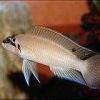 Brichard’s
Brichard’s  Southern
Southern  Cichla
Cichla 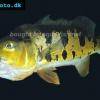 Peacock
Peacock  Chiseltooth
Chiseltooth  Bolivian
Bolivian  Red
Red  Many-pointed
Many-pointed  Jack
Jack  Red
Red  Three
Three 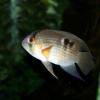 Keyhole
Keyhole  Azureus
Azureus  Red
Red  Jackson’s
Jackson’s  Crenicichla
Crenicichla  Honduran
Honduran  Blue-eye
Blue-eye  Afra
Afra 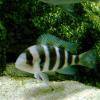 Frontosa
Frontosa  Slender
Slender  Malawi
Malawi  Chequerboard
Chequerboard  Checkerboard
Checkerboard  Malawi
Malawi  Ectodus
Ectodus  Tanganyika
Tanganyika  Canara
Canara  Green
Green  Rostratus
Rostratus  Pearl
Pearl 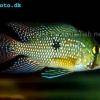 Geophagus
Geophagus  Yellowhump
Yellowhump  Suriname
Suriname  Redhump
Redhump  Red
Red  Dority’s
Dority’s  Argentine
Argentine 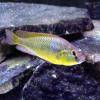 Burton’s
Burton’s  Victoria
Victoria 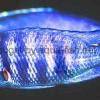 Haplochromis
Haplochromis  Jewel
Jewel  Banded
Banded 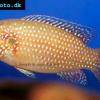 Lifalili
Lifalili  Lowland
Lowland  Texas
Texas  Pantano
Pantano  Severum
Severum  Banded
Banded 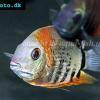 Severum
Severum  Rainbow
Rainbow  Parrot
Parrot  Chocolate
Chocolate  Brown
Brown  Marlieri
Marlieri  Golden
Golden  Striped
Striped  Masked
Masked 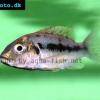 Konye
Konye  Blue
Blue  Trewavas
Trewavas  Electric
Electric  Dwarf
Dwarf  Redbreast
Redbreast  Lamprologus
Lamprologus  Gold
Gold 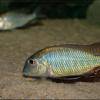 Greenface
Greenface 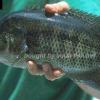 Mayan
Mayan  Aurora
Aurora  Blue
Blue  William’s
William’s 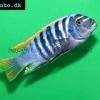 Zebra
Zebra  Malawi
Malawi  Blue
Blue 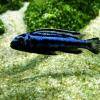 Blue
Blue  Mbuna
Mbuna  Parallel
Parallel  Purple
Purple  Flag
Flag  Bolivian
Bolivian  Ram
Ram  Basket
Basket 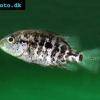 Haitian
Haitian  Zebra
Zebra  Striped
Striped  Neolamprologus
Neolamprologus  Brevis
Brevis  Fairy
Fairy 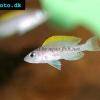 Neolamprologus
Neolamprologus  Cylindricus
Cylindricus  Hecq’s
Hecq’s  Neolamprologus
Neolamprologus  Lemon
Lemon  Mustax
Mustax  Daffodil
Daffodil  Six-bar
Six-bar  Five-bar
Five-bar  Marbled
Marbled 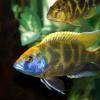 Giraffe
Giraffe  Blue
Blue  Sulphurhead
Sulphurhead  Wolf
Wolf  Jaguar
Jaguar  Blue
Blue  Marakeli
Marakeli  Madagascar
Madagascar  Pinstripe
Pinstripe  Pelmatochromis
Pelmatochromis  Kribensis
Kribensis 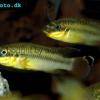 Striped
Striped  Red
Red  Deepwater
Deepwater  Fenestratus
Fenestratus  Nichols’
Nichols’  Southern
Southern  Bumble
Bumble  Demason’s
Demason’s  Slender
Slender  Red
Red  Mbuna
Mbuna  Malawi
Malawi  Kenyi
Kenyi  Powder
Powder  Altum
Altum  Angelfish
Angelfish  Angelfish
Angelfish 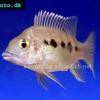 East
East  Juba
Juba  Earth
Earth 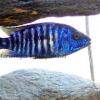 Electric
Electric  Azure
Azure 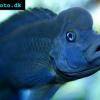 Lionhead
Lionhead  Discus
Discus  Blue
Blue  Red
Red  Zebra
Zebra  Brichard’s
Brichard’s  Blue
Blue  Firemouth
Firemouth  Zebra
Zebra  Yellow
Yellow  Blue
Blue  Dwarf
Dwarf  Blunthead
Blunthead 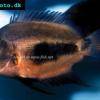 The
The  White
White  Twoband
Twoband  Fenestratus
Fenestratus  Window
Window  Tailbar
Tailbar  Black
Black  Redhead
Redhead 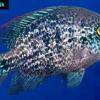 Oaxaca
Oaxaca  Xenotilapia
Xenotilapia